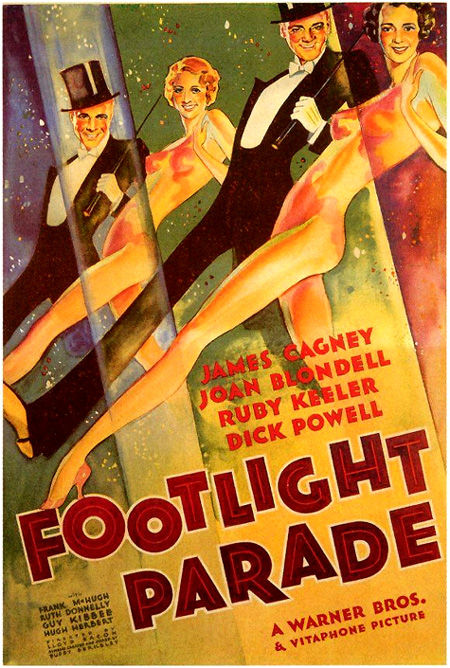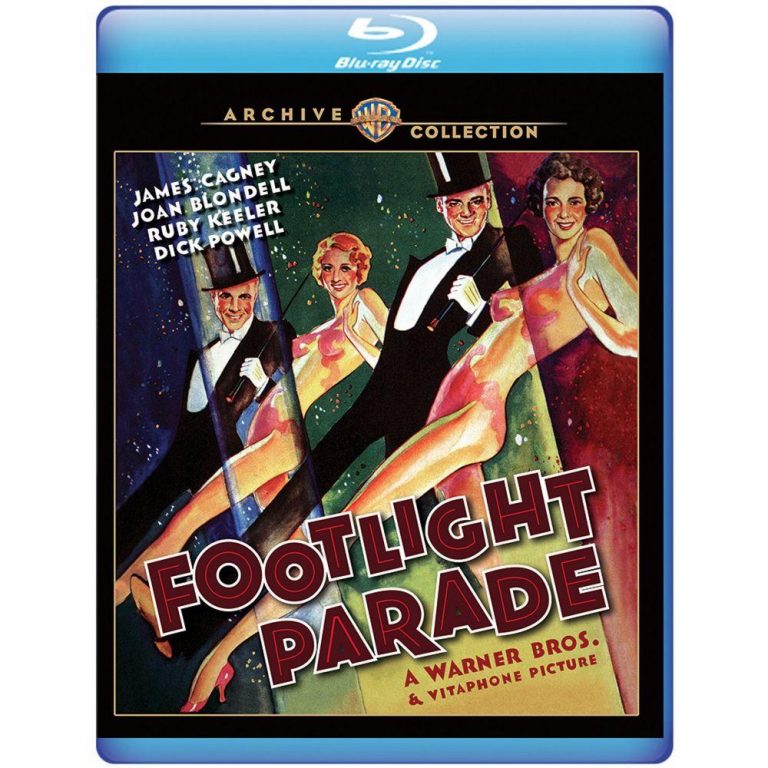


To say that one has never seen anything like it is probably an understatement. If that’s not enough, it climaxes with sailors forming the NRA (National Recovery Act) eagle, the American flag and even FDR’s picture (the Warners were nothing if not staunch Democrats). The second takes his ability to tell a story with his numbers to new heights, with its account of a sailor searching through opium dens, dives and whorehouses for his missing Shanghai Lil. Part of that may be attributable to the presence of James Cagney as the film’s star, but really it’s the combination of Cagney, the bright dialogue and two of Berkeley’s best - and wildest - production numbers, “By a Waterfall” and “Shanghai Lil.” In the first, he outdid himself in terms of pure spectacle. Certainly, it was the biggest box-office hit of the three films when they were re-issued in the late 1960s and early ‘70s to cash in on a nostalgia craze. James Cagney stars a fledgling producer who finds himself at odds with his workers, financiers and his greedy ex-wife when he tries to produce live musicals for. Its story is no better or worse than the others, but its screenplay gives the pre-code barbs of Golddigers a run for its money. I admit to having a preference for Golddiggers of 1933, but a case can certainly be made for Footlight Parade as the best of them all. What is remarkable is that all three pictures came out in one year. Opening the 'Stephen Sondheim Encyclopedia,' Part 4 - Winding up our four-part miniseries in conversation with Rick Pender, author of 'The Stephen Sondheim Encyclopedia,' and featuring selections from such classic musicals as 'Follies,' 'Gypsy,' 'Into the Woods' and 'Company. tackled Golddiggers of 1933, and when that clicked, they wasted no time in putting together Footlight Parade. It is not in the public domain in the countries or areas that do not apply the rule of the shorter term for US works, such as Canada, Mainland China (not Hong Kong or Macao), Germany, Mexico, Switzerland, and other countries with individual treaties.Right after the success of 42nd Street (1933), Warner Bros. Additionally, foreign works created outside the US are subject to copyright restoration even with a defective notice. It is a printed literary, musical, or dramatic work that does not include the year.Ī defective notice does not invalidate copyright in cases where the error is immaterial and would not mislead an infringer, such as an abbreviated name.Notice is illegible or concealed from view.Notice does not include a named claimant or does not name the actual copyright holder.Notice is dated more than one year later than the actual date of first publication.Notice does not include the copyright symbol ©, the word "Copyright", or the abbreviation "Copr.".This work is in the public domain because it was published in the United States between 19, inclusive, with a defective copyright notice ( copyright notice information) containing at least one of the following defects: Note that the poster art is a distinct work from the film it represents and had to be renewed separately. Because it was not renewed, copyright lapsed at that time. In order to maintain copyright protection, the poster would have had to be renewed 28 years after publication, in either 1960 or 1961 (see the sections for "Artwork: Original registrations and renewals" and refer to the links to search the copyright catalogs for those years). Even if the notice were somehow deemed sufficient, the poster art was not renewed as required by American copyright law to extend/maintain protection for works published 1963 or earlier. If just one of these elements is omitted, the work is deemed to be published without notice and is not eligible for copyright protection.

"The name of the copyright owner, or an abbreviation by which the name can be recognized, or a generally known alternative designation of the owner."."The year of first publication for the work" and."The symbol © or the word 'Copyright' or the abbreviation 'Copr.' or an acceptable variant such as "(c)".Keep in mind that the pre-1989 requirements for copyright notice were highly formalistic and, other than a few enumerated exceptions, required these three elements: While the mashing together of "Warner" and "Bros" is excusable, the omission of a year of publication is not. It carried a defective notice that omits the year: "Copyright - WarnerBros. Footlight Parade: Sounds of the American Musical gives listeners the best seat in the house for a celebration of Broadway and Hollywood musicals from the early 20th century to current hits: from Gershwin, Berlin and Rodgers & Hammerstein to Lin-Manuel Miranda. Second, the poster was first published prior to 1978 without a valid copyright notice.First, the photo is a mechanical scan/photocopy of the original poster and does not qualify for independent copyright protection.


 0 kommentar(er)
0 kommentar(er)
